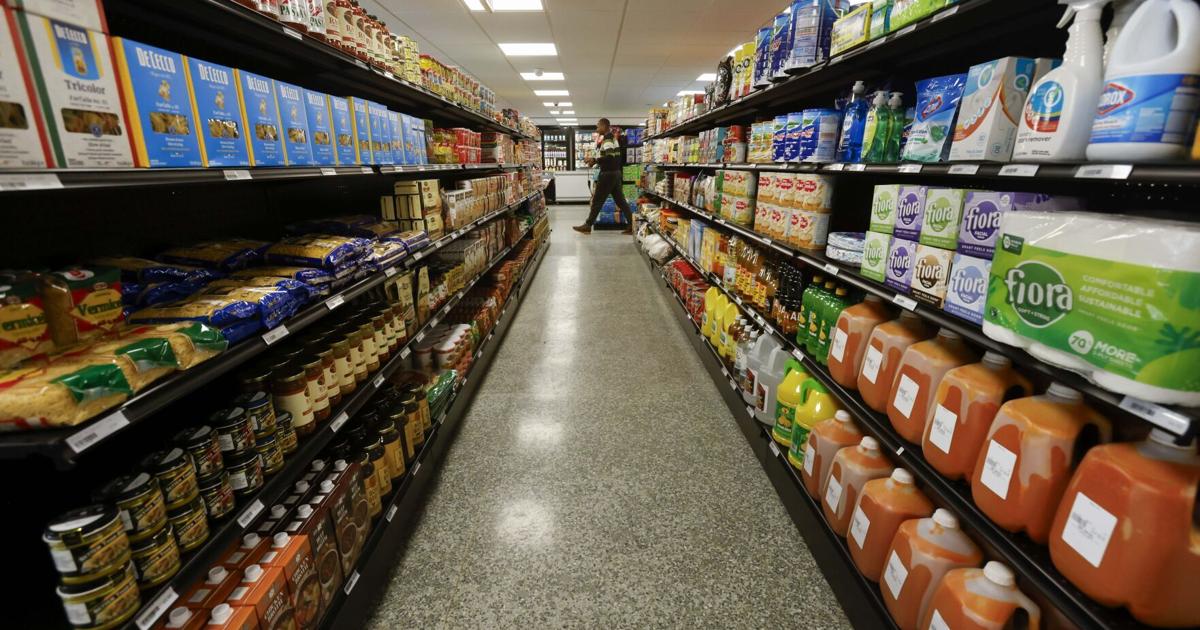Why do we crave comfort food so much?
Every corner of the world has its own comfort food, beloved dishes that mean something deeply personal to the people who live there because they have the shared experience of eating them with family and friends.
In France, it may be gratin dauphinois; in China, a steaming bowl of congee; in Greece, moussaka; and here, perhaps it’s homemade mac ‘n cheese. All these dishes are different, to be sure, but similar in that they are hearty, often gooey and despite being calorie-laden (comfort foods are typically high in carbs and/or sugar) they embody a stick-to-your-ribs goodness that transports people to a simpler time and happy place. Almost always, these meals remind people of home.
Nostalgia is comfort food’s primary ingredient. As Cara Rosenbloom, a writer and registered dietitian in Toronto, explains, these foods have touched our lives in important ways, and when we eat them, we feel more connected to the people we love (or have lost). Indeed, even thinking about a favourite comfort food can increase our feeling of emotional well-being.
“Psychologically, we crave foods that connect us with special times in our life – perhaps a childhood memory, a trip or a holiday. When food is connected to nostalgia, it provides contentment. It makes us feel safe,” says Rosenbloom, who adds that whenever she smells French fries, heavily doused in vinegar, she thinks of her mom, a total foodie, who would treat herself to fries at a drive-through when she was having a bad day.
What makes comfort foods so appealing is a question Charles Spence, an experimental psychologist at the University of Oxford, has explored for years. “I recently reviewed the literature on comfort foods, hoping to see if there was a single sensory element, like a taste, a colour, or texture that was common. However, no such luck. It turns out that the list of top comfort foods depends on where in the world one grew up,” he says.
“As far as I could tell, the common thread in different people’s comfort foods is they are the foods they were given by a caretaker when they were young and in some way threatened. Consuming that comfort food again as an adult can help bring back many of the positive feelings of being looked after or cared for. As such, there is a very real sense that comfort foods can provide emotional sustenance or support over and above any actual nutritional sustenance.”
Rosenbloom adds that when we are stressed, our bodies release the stress hormone cortisol, which breaks down fat and carbohydrates for a quick boost of energy. “That leaves you hungry and craving sweet, salty or high-fat foods.”
She knows many comfort foods aren’t the healthiest, but that does not stop her from indulging when the mood strikes. “We shouldn’t feel shame or embarrassment that we have comfort foods we enjoy,” says Rosenbloom, who lost her mom to cancer 12 years ago and every year on the anniversary of her birthdate makes her mom’s recipe for ratatouille, which in her mind is the ultimate comfort food – along with pumpernickel bread with butter, fresh sliced tomatoes and a sprinkle of salt and pepper (another favourite from childhood).
“There is a comfort in the scents, the flavours, and the memories these foods evoke. Food is comfort for me, always.”
– Gayle MacDonald
Shirin Nezafati
Engineer and recipe tester Shirin Nezafati calls her mom’s gheymeh stew “Iran on a plate.” The rich, savoury aroma of the beef and yellow split pea dish instantly immerses her in a flood of comforting memories.
“It is a remedy for everything. Whether I was feeling under the weather, overwhelmed by life’s challenges or simply in need of a culinary hug, a steaming bowl of her homemade stew with rice from her hometown, Gilan, could work wonders.”
Paul Toussaint
Paul Toussaint learned the ins and outs of fine dining at one of the top restaurants in the world, Montreal’s Toqué!, and took over as executive chef at Agrikol in 2017, after years spent back in his home country of Haiti helping to rebuild from the 2010 earthquake. Featured on his menu at Montreal’s TimeOut Market is a traditional Haitian street-food dish: griot.
“Everyone has their favourite kiosk, and whenever I’m in Haiti, I go to Jeannot’s. He would always keep the pork belly, the best part, each Monday, until I came by. That will be forever etched in my memory. Jeannot’s is the best and I still haven’t figured out his secret recipe!”
Irene Matys
Hamilton-based recipe developer Irene Matys is captivated by the cuisine of her Greek Cypriot roots, with its vibrant blend of Mediterranean and Middle Eastern influences and fresh ingredients.
“The notes of cinnamon, nutmeg and fresh herbs infuse traditional dishes such as makaronia tou fournou, which is a very nostalgic dish to me. I helped my mom and yiayia prepare the dish for special occasions, family celebrations and Sunday meals. It was my job to layer the long tube of pasta in perfect layers for the bed of the aromatic meat mixture and creamy béchamel. Our entire home would be filled with the delicious scents as it baked.”
Bilal Bhatti
In order to cook more like his mother, Bilal Bhatti lets his intuition lead the way. In 2020, he started sharing his journey of learning traditional Pakistani recipes on his YouTube channel, GoldenGully. When preparing one of his favourite comfort foods, a thick and hearty meat and lentil stew called haleem, he doesn’t use traditional measurements. In line with his coming cookbook Beyond Measure, he aims to “eyeball cook” and says the “spoonfuls” in this recipe mean “any dinner spoon you have lying around.”
“As a child, I remember eating it by the spoonful whenever I finished my naan. On a recent trip to Pakistan, I visited my mother’s home city, Karachi, specifically to try their haleem. My mom’s is way better!”
Aiko Jones
Growing up in Barbados, Jones had access to fresh and abundant fish from markets scattered across the island. Now living in Toronto, where Bajan food options are limited, Jones has fulfilled her cravings by delving into the world of Bajan cuisine, making authentic dishes herself. Fish and macaroni pie, her choice of comfort food, is a staple.
“I am a huge fan of grilled and roasted fish, as the smoky flavours from the grill truly enhance the taste of any protein.”
Bryan Birch
Bryan Birch is the head chef and co-founder of Griot’s Table, which curates Afro-culinary experiences connecting food with history and storytelling showcasing the diversity and sophistication of Black and African culinary traditions. Birch’s favourite comfort food reminds him of growing up picking sweet corn in Toronto corn fields with his Trinidadian parents, and the sounds of calypso on warm summer nights.
“When I was old enough to attended soca fêtes around the city, the party was never complete until the calls for ‘Cahn soup, cahn soup’ were answered. My nostalgia is found in a mix of soca music, loved ones and raised drunken voices causing riotous laughter. Enjoying this soup is a family tradition and hopefully, it will bring my son as much joy as it has brought me.”
Zulfikar Fahd
When Zulfikar Fahd was growing up in the small city in East Java, Indonesia, his grandmother would make soto ayam (chicken noodle soup with turmeric, ginger and lemongrass) every week, especially on cold and rainy days. After Fahd migrated as a refugee to Canada, he couldn’t find the lush, velvety soup at any Indonesian restaurants in Toronto, which is one reason he decided to open his restaurant, Java Bali Kitchen, where he serves it.
“Soto is Indonesia’s national soup. Every island, even city, has their own version of this gingery and citrusy dish. Some use beef, many others use chicken. Some serve it with rice noodles, while many prefer it with jasmine rice. One thing in common: They’re all tasty and comforting!”
Maria Polotan
Food always played a central role in family celebrations for chef Maria Polotan of Lami and Mama Linda’s catering. She now offers traditional Filipino home cooking at farmers’ markets in Toronto and delivery through the Cookin’ app. Her favourite comfort food dish was born from a cultural exchange between the Maranao, one of the Indigenous peoples of the Philippines in the southern island of Mindanao, and their Indonesian and Malaysian neighbours.
“The Maranao rendang uses fresh herbs pounded into the paste making it much more fragrant than other rendangs,” says Polotan.
Suman Ali
For award-winning Toronto-based chef Suman Ali, breakfast was a key meal growing up in Bahrain, where breakfast is typically a shared family meal that seamlessly blends sweet and savoury elements, such as shakshouka, hummus, kibbeh (a sort of fried meatball), mahalabiya (sweet milk pudding), pitas – and one main component: labneh badinjan, an eggplant and yogurt dish that is packed with sweet, sour and tangy flavours.
“My mother emphasized not just having a nutritious meal but also the idea of sharing and utilizing existing ingredients and dishes that could be converted into breakfast recipes the next day,” says Ali.
Paul Sanchez
Eager to share his passion for authentic Costa Rican cuisine with the world, restaurateur and chef Paul Sanchez says chifrijo is a journey into the heart of tradition. He says the dish – which includes seasoned meat, rice and beans – has a magic for him that transcends its ingredients.
“It’s a symphony of memories, a culinary journey back to the comforting embrace of home. The sizzle of pork, the fragrance of spices and the communal joy of sharing – it’s a cherished chapter in my culinary story.”







